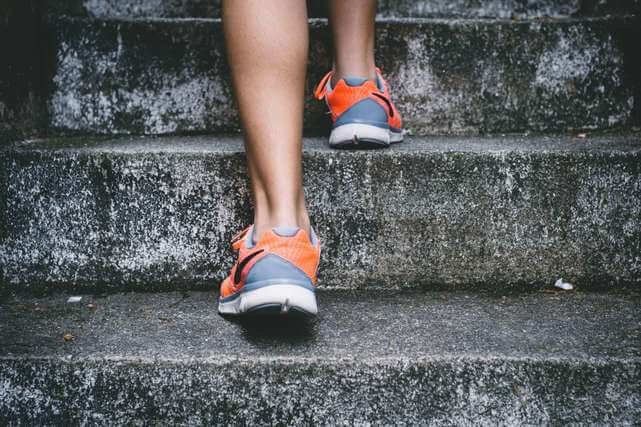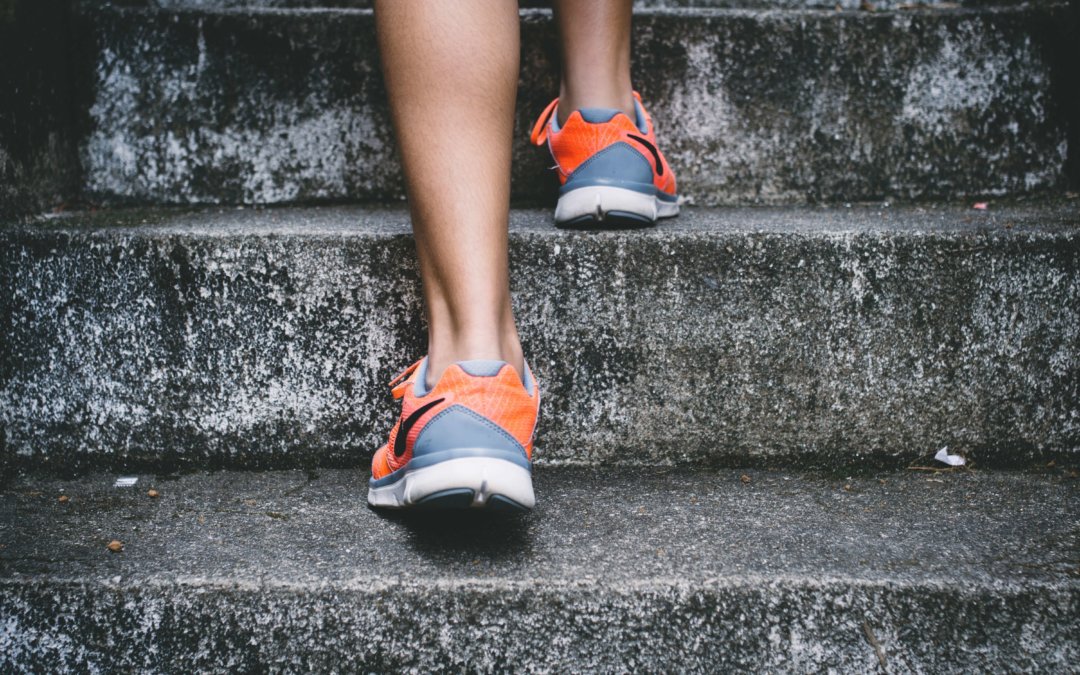
We all know that exercise is an important part of achieving a healthy body and mind. The NHS recommends that we do 150 minutes of moderate activity every week. Yet, many adults spend, on average, 10 hours or more each day sitting or lying down. Long periods of inactivity lead to more aches and pains, restricted mobility and a higher chance of heart disease, obesity and falls.
As we get older it’s more important to stay active if we want to maintain our independence. If we don’t stay active it will be harder for us to do all the things we enjoy doing, like playing with the grandchildren, meeting friends or simply walking to the shops. But, for many of us, walking into our local leisure centre can feel intimidating. So, what if you could stay fit at home?
We’ve found 7 of the best exercises to do without going outside. We’ll explore the pros and cons of exercising at home, how to perform these simple exercises and how adding more time to exercise in your week can help your overall health.
Get a FREE Brochure
Simply complete our form to see a full range of bathing solutions & their key features. It takes no time at all!
We would all like to stay fit and healthy well into our later years, but restricted mobility can hinder our good intentions. Stepping into a gym or leisure centre can too be quite intimidating for a person of any age. So why might exercising at home be a good alternative? By choosing to exercise at home you aren’t restricted by the opening times of your local leisure centre, and you don’t have to make any special arrangements to get there.
Whilst exercising at home can be a convenient way to stay fit, make sure you find time to leave the house 2-3 times a day to nurture your social needs too. These are as important as your physical ones. This could include walking to the shops or chatting to a neighbour.
Making Room at Home
You will also need to find space in your home to perform these exercises. The best place for many is usually the living room. If you don’t have enough space there, you could ask a friend or family member to help you rearrange your furniture so that it’s a more exercise-friendly environment for you. Make sure that you can lie down comfortably on a yoga mat for floor exercises, and that you have enough room to reach up and to the sides of your body without knocking into anything for aerobic and strength exercises.
What are the benefits of exercising in later life?
Evidence supports that exercising in older age not only improves your mental ability but also reduces the risk of dementia.
Daily chores such as housework or cooking won’t count towards your recommended 150 minutes of moderate activity as it won’t raise your heart rate enough. So which exercises can you do at home?
For beginners
Sit-to-Stand Squat
This is a great exercise to raise your heart rate while strengthening your thighs, knees and glutes.
- Sit on the edge of a chair with your feet hip-width apart.
- Stand up slowly, making sure not to use your arms if you can to help.
- Focus on looking forward and not down.
- Once you have stood upright, sit down slowly, bottom-first.
To make this exercise more challenging you can hold a weight to your chest. If you don’t have a weight, a household item like a heavy book or pint of milk will work just as well.
If you feel you can make this exercise more challenging, only touch the seat with your bottom as you move closer to the chair (rather than sitting all the way into the chair).
For moderately fit and flexible exercisers
Mountain Climbers
This is a great floor exercise to raise your heart rate and strengthen your core.
- Come into a plank position hands shoulder-width apart.
- Look down, maintaining good head alignment. You don’t want to arch your head up
- Pull your right knee into your chest as far as you can.
- Place your right foot back to the starting position and pull your left knee into your chest.
- Repeat 16-20 times.
- The faster you go the higher your heart rate will become. But start slow and controlled to make sure you are engaging your core muscles correctly.
The most common mistakes with this exercise are to arch your back or lift your bottom in the air. Maintain a flat back, keeping your bottom in line with your shoulders
Which exercises can you do if you have sore joints or limited movement?
For those struggling with balance, limited flexibility or sore joints you can try these exercises. You can also look at our 8 tips to improve your balance.
Hips Marching
This is a great way to strengthen your hips and thighs, improve your flexibility and get your heart rate up.
- Sit up straight on a chair, making sure not to lean back. Hold on to the sides of the chair for support.
- Now lift your left leg with your knee bent, as far as is comfortable, never pushing your body into discomfort.
- Now lower your leg with control and repeat with the other leg.
Aim to do this routine 5 times, increasing the number of repetitions to make this exercise more challenging when you feel ready. If you want to make this exercise even more challenging, you can hold light weights of about 5 kg in each hand and march on the spot.
Arm Raises
This is a fantastic exercise for strengthening your shoulder whilst increasing your heart rate.
- Sit up straight on a chair with your arms by your sides.
- With your palms facing forwards raise both arms out to your side to create a T-shape, breathing out as you do so. Only lift your arms as high as feels naturally comfortable.
- Return your arms to your sides, breathing in.
You should aim to repeat this exercise 5 times. Your shoulders will naturally want to creep up towards your ears, so be sure to make an effort to keep them down as you perform this routine.
Keeping active and healthy doesn’t mean forking out for an expensive health club. Test out some of these simple ways to stay active at home and let us know how you get on!






